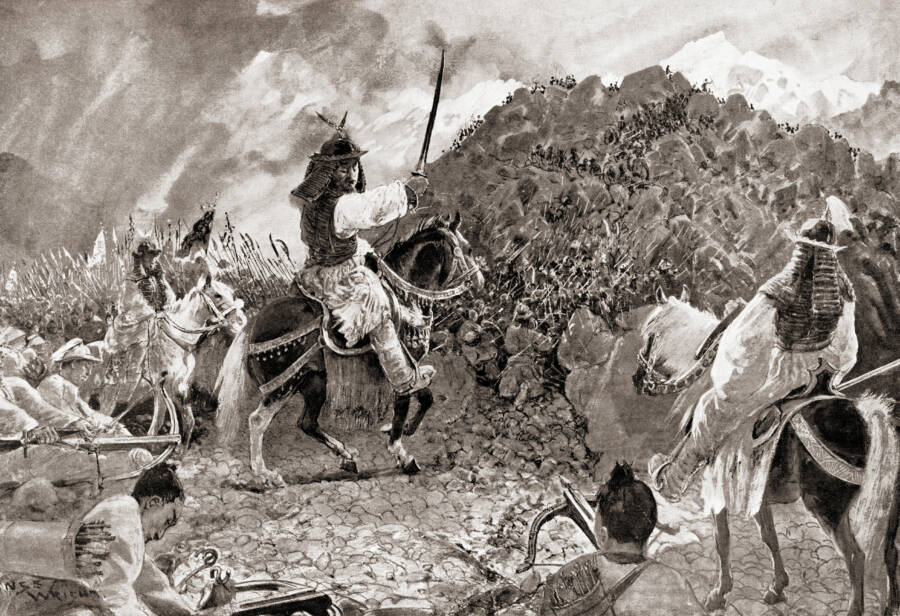“Ancient Mystery Unveiled: Gruesome Mass Grave of Dismembered Han Warriors Discovered Near Great Wall”

Alexey KovalevBy analyzing DNA and isotopes in the skeletons, researchers were able to determine where the men had originally come from.
This, in turn, confirms a theory about the fortress itself. Though most researchers have long assumed it was a Han fortress based on artifacts found at the site, this hadn’t yet been proven. Given the identity of the slain soldiers, however, it seems more likely than ever that the fortress belonged to the Han.
Indeed, it may even be the storied fortress known as Shouxiangcheng. This fortress, mentioned in Chinese texts, was built in 104 B.C.E by the Han, during the era of war with the Xiongnu. However, its location had been lost to time.
“The results of our 2009 excavations of the fortress and tomb indicate that Bayanbulag is the Shouxiangcheng,” Kovalev told All That’s Interesting. “It was used as a base for military campaigns against the Xiongnu… The evidence is very strong. We found a huge number of pottery fragments, and they all belong to the Han cultural traditions. We excavated a large building of typical Chinese post-and-frame architecture, which was covered with Chinese-type roof tiles. We found about 250 crossbow arrowheads, about 15 fragments of crossbow locks (trigger-mechanisms), a large number of Han iron tools, bushings, hooks. We also found private seals, coins and other Chinese artifacts.”
He continued: “Our discovery is important because it fully confirms the data from written sources about the role that the Shouxiangcheng fortress played in the war as the main military base of the Chinese army.”
Inside The Bloody History Of The Han-Xiongnu Wars

Classic Image/Alamy Stock PhotoA depiction of Han general Li Ling and his army before a battle with the Xiongnu.
The Han-Xiongnu Wars were a series of bloody conflicts between the Chinese Han Empire and the nomadic Xiongnu people. The two groups clashed as early as 200 B.C.E., though the war began in earnest around 133 B.C.E. It lasted for 200 years, and began to wind down around 80 C.E.
The Han emerged victorious, while the Xiongnu forces, largely obliterated, were forced to flee west. But they would have historical revenge, as many of their descendants formed the powerful Huns.
This mass grave found in Mongolia offers a macabre look at this centuries-long conflict. Though the Han eventually won the war, the way the men in this mass grave died helps reveal the brutal cost of victory.
Indeed, archaeologist believe that there’s more to be found at the Bayanbulag site. But they need far more time and funding to fully excavate the area.
“There is at least one more such grave there — we need to study it carefully,” Kovalev told All That’s Interesting. “In addition, we have excavated less than 10 percent of the entire fortress, we need to conduct a larger excavation. Marauders with metal detectors are working at this site, collecting bronze and iron items. It is better to explore the fortress as soon as possible. We also need to restore hundreds of our finds… and fully publish a report on the 2009 excavations. But there is no funding allocated for this or for next excavations. I hope that publication will attract the attention of sponsors and Mongolian government agencies to the importance of this task.”
After reading about the mass grave of Han soldiers found in Mongolia, go inside the ancient Mongolian art of hunting with eagles. Then, look at these photos of life in Mongolia before the Soviet purge.














